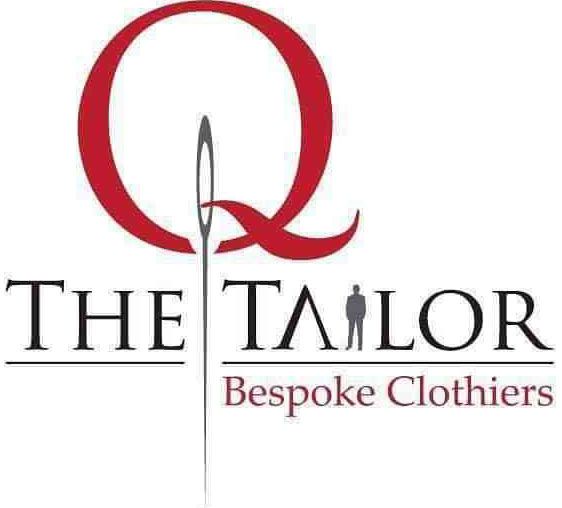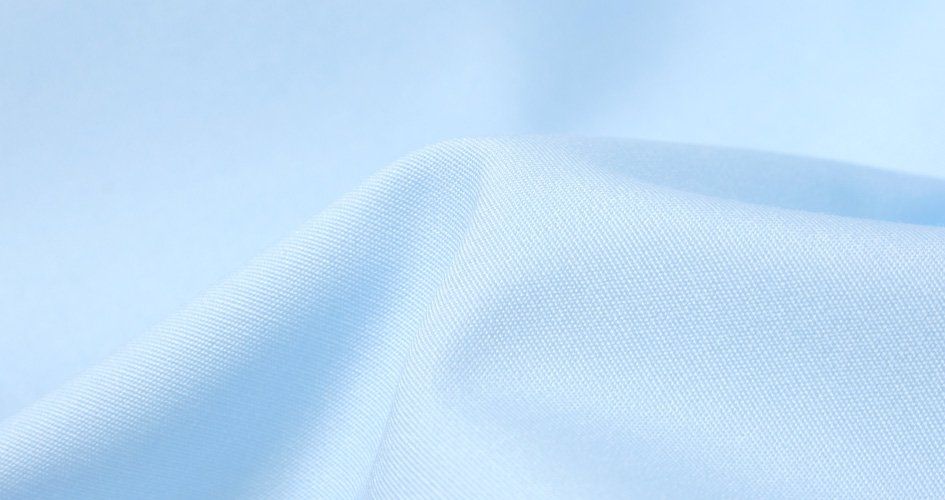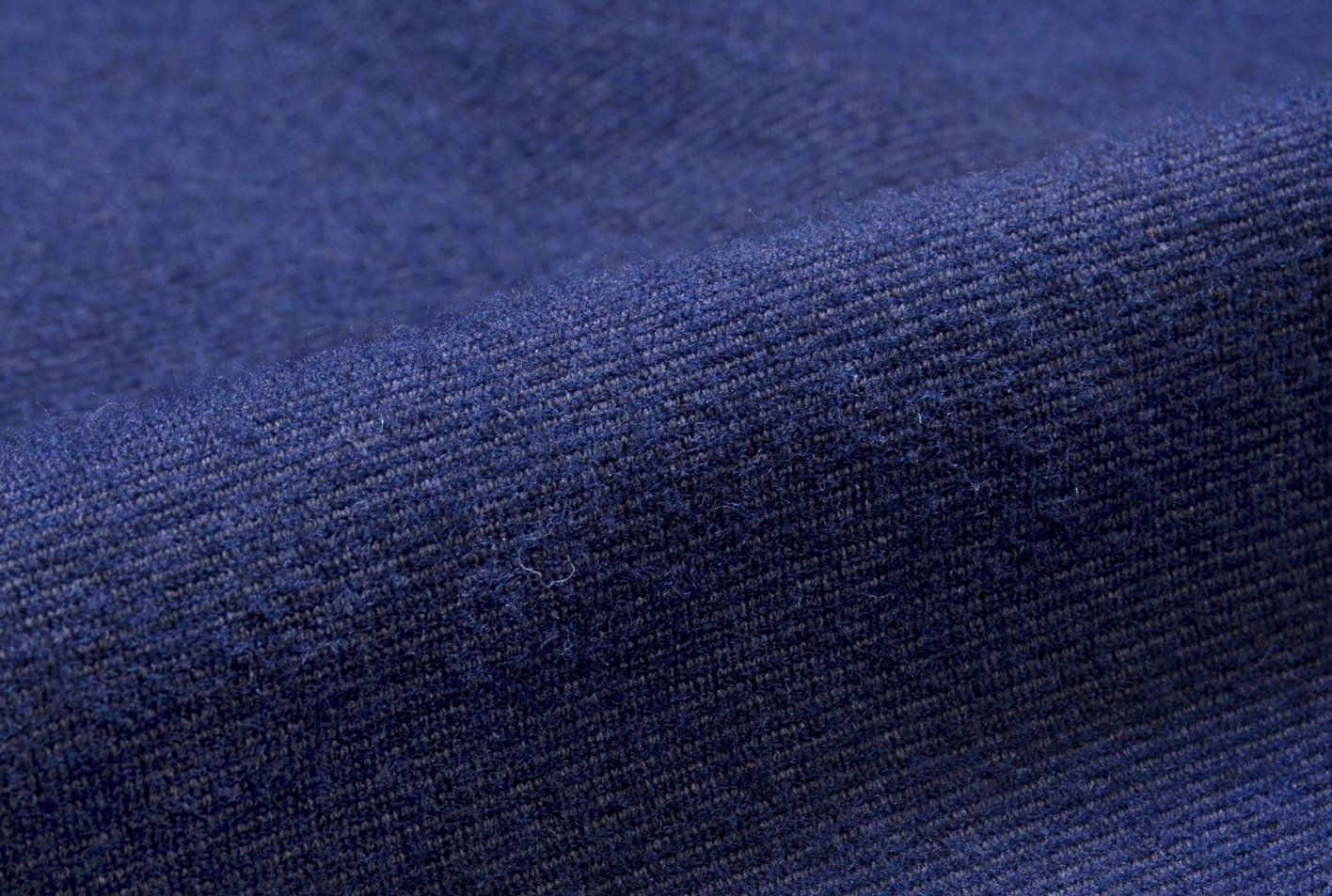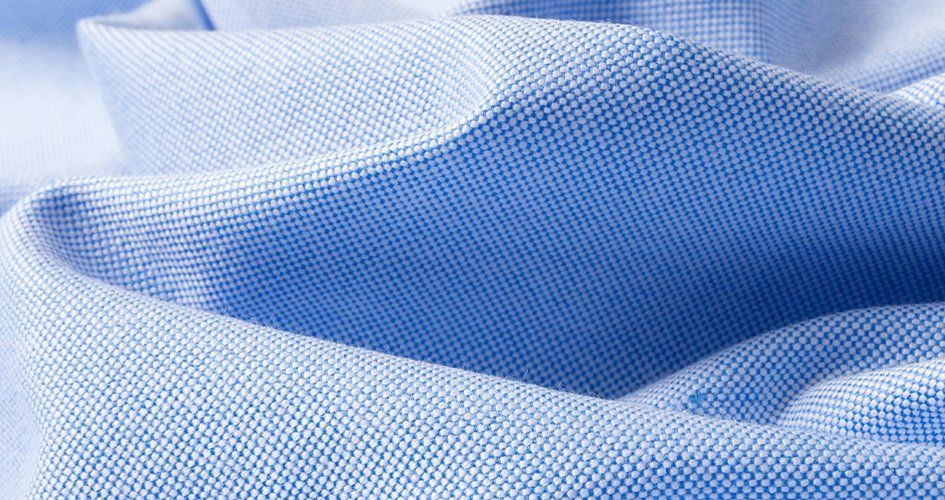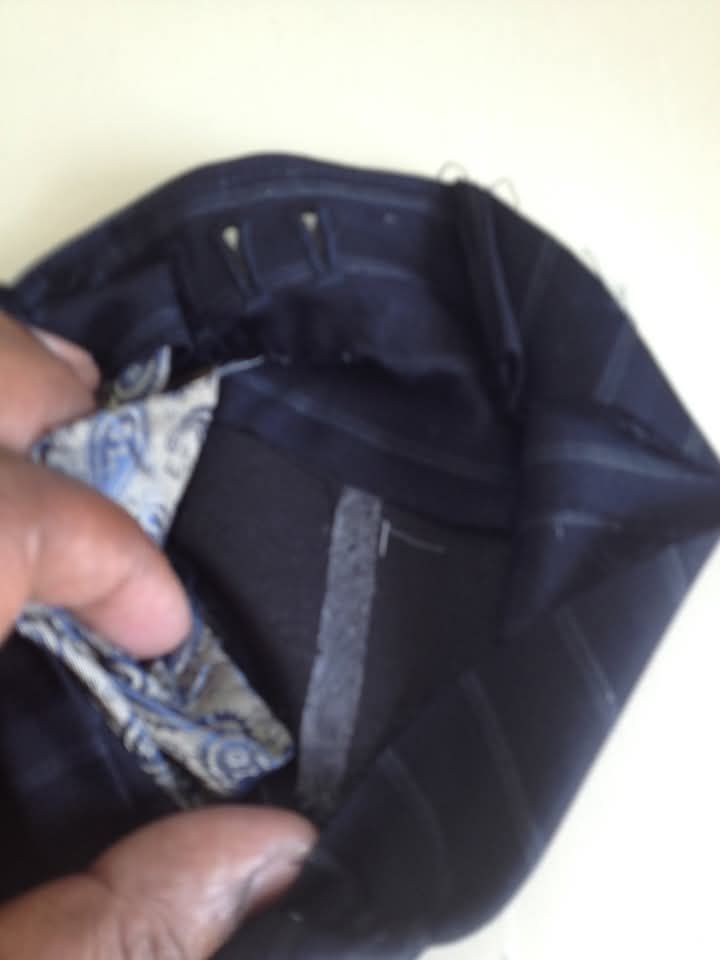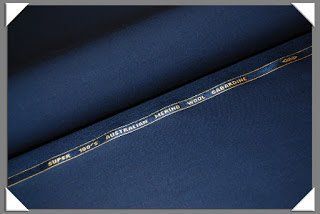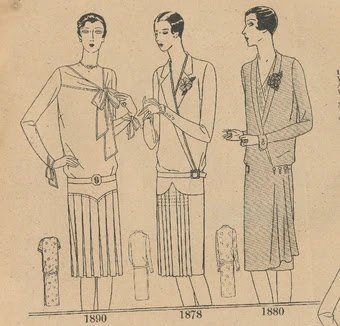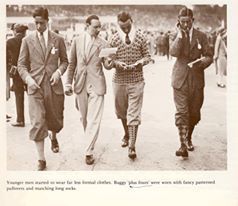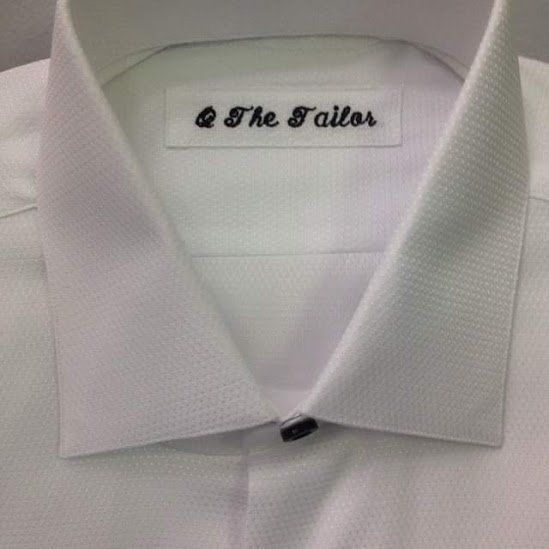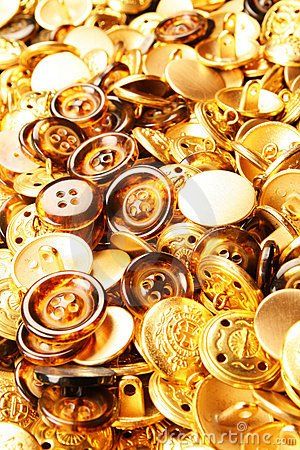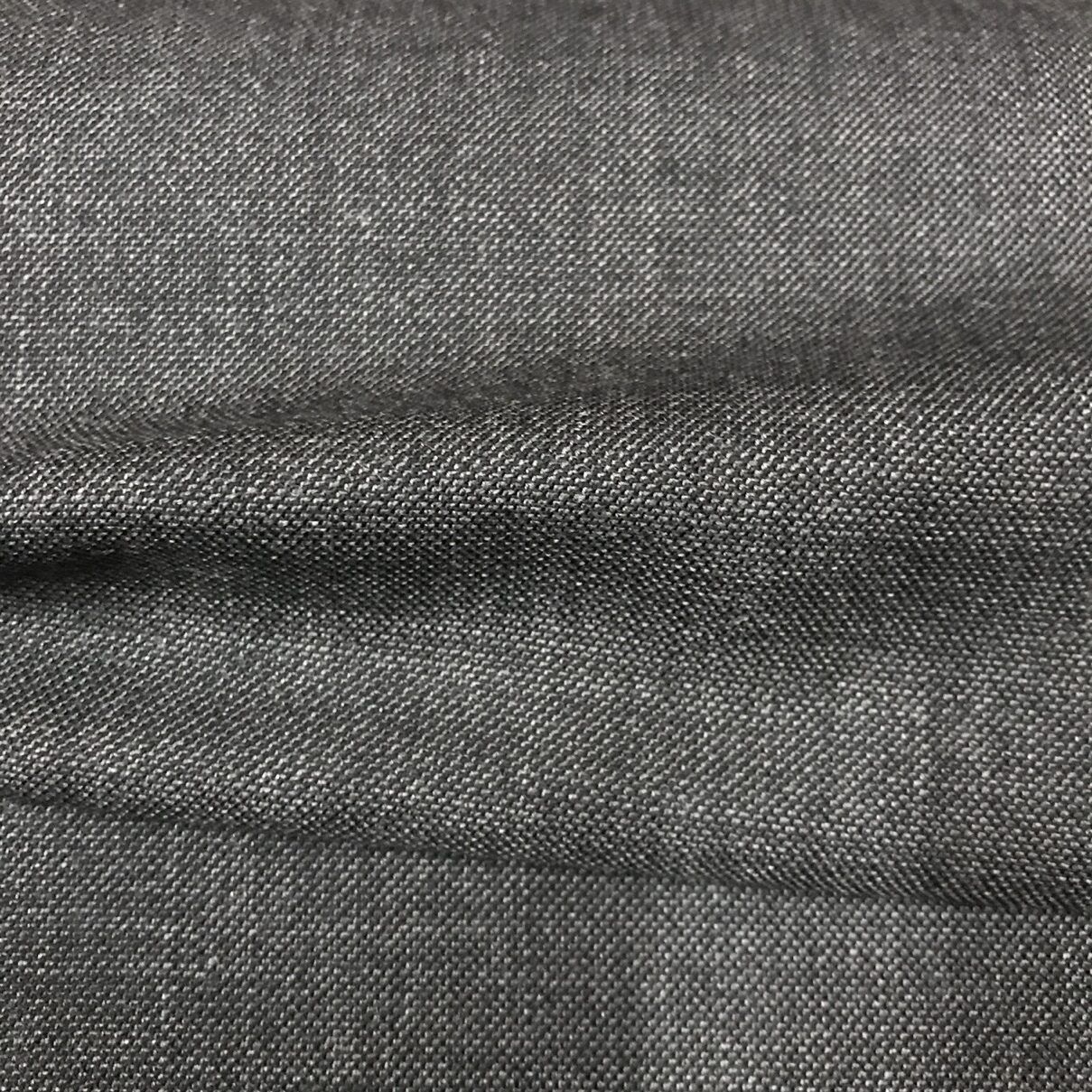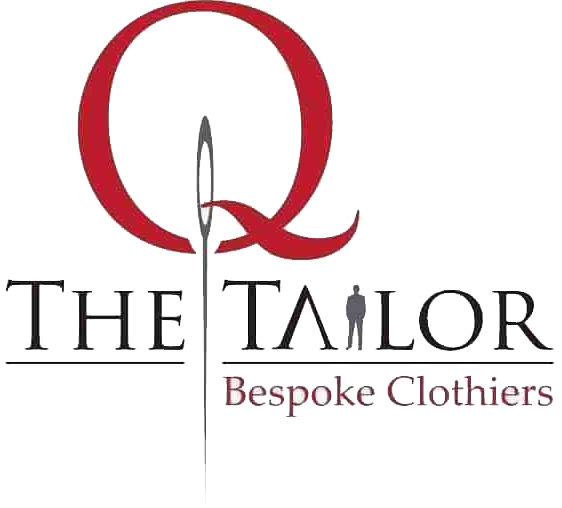Do you know your shirt fabrics?
Dress Shirt Fabrics Overview
Here we provide the definitive overview of the different types of fabrics commonly used in dress shirts. By understanding what the different weaves mean for a fabric you can be sure to find the ideal dress shirt fabric for your needs.
Broadcloth
Broadcloth—often referred to as poplin–is a tightly woven fabric with a very simple over-under weave and very little sheen, which makes it nice and professional. Broadcloths are great for guys looking for as little texture as possible in their fabrics. They are generally a thinner, lighter fabric. Particularly, white broadcloth fabrics can be slightly transparent. Broadcloths generally wear the smoothest out of all weaves thanks to their lack of texture, but can also be the most prone to wrinkling.
Learn more about broadcloth fabrics here or browse our selection of broadcloth fabrics here.
Broadcloth Dress Shirt Fabric
Twill
Twill Dress Shirt Fabric
Pinpoint Oxford
Pinpoint Dress Shirt Fabric
Chambray
Chambray Fabric
Denim
Denim Shirt Fabric
Dobby
Dobby Dress Shirt Fabric
End-on-End
End-on-end broadcloths are a very popular type of dress shirt fabric with a distinct contrast coloring. Woven with colored thread in the warp and white thread in the weft, it looks like a true solid from a distance, but has more texture when seen from up close. Typically a lighter weight fabric, it’s a great choice for those living in warmer climates.
End on End Dress Shirt Fabric
Flannel
A fall/winter favorite. Flannels are warm, fuzzy fabrics that are most often brushed twill or brushed poplin fabrics. While they’re most regularly 100% cotton, they sometimes can come in cotton/wool, and even cotton/cashmere blends for added warmth. Usually made in thicker weaves, these are decidedly casual fabrics that are great for cold weather.
Flannel Dress Shirt Fabric
Melange
Melange fabrics can come in every sort of weave–poplin, twill, royal oxford, etc–and are woven using multi-colored yarns. Each yarn will be dyed this way, most often with 2-3 subtlety different hues. These unique yarns can help achieve a heathered, intentionally inconsistent, somewhat organic look. Melange fabrics are different than Mouline fabrics, as Mouline fabrics are made from consistent, one-color yarns that are twisted together to achieve a multi-color look.
Melange Dress Shirt Fabric
Oxford Cloth
Oxford Cloth is very similar to pinpoint oxford, except it uses a slightly heavier thread and looser weave. It has a slightly rougher texture but is more durable than most fabrics. It’s composed of a symmetrical basketweave where one yarn may cross two yarns. Originally developed for sportswear, so it’s the least dressy, and (in some circles) not considered appropriate for office or formal wear. Oxford cloth has always been a staple in traditional American button down polo shirts. It can be worn slightly wrinkled straight from the dryer and still look great.
Learn more about oxford cloth here or browse our selection of oxford cloth here.
Oxford Cloth Shirt Fabric
Poplin
Poplin Dress Shirt Fabric
Royal Oxford
Royal Oxford is what we call a “pretty fabric”. Although the name is similar, it is not at all similar to pinpoint oxford or oxford cloth. It is a dressy fabric with a distinctive shine and texture. With a more prominent weave than broadcloth or pinpoint, it’s ideal for those interested in a dress or formal shirt with visible texture.
Learn more about royal oxford fabrics here or browse our selection of royal oxford fabrics here.
Royal Oxford Dress Shirt Fabric
Herringbone
Herringbone shirts are popular, more textured shirts for both dress and casual wear. Herringbone is essentially a twill that is mirrored when woven to create the sort of chevron, “V-shaped” look. The fabric’s name comes from its resemblance to the bones of a herring fish.
Seersucker
Seersucker is a fabric primarily used to make shirt for warm weather, and is is known for its distinctive, puckered appearance. This puckered look is created in the finishing of the fabric, after it’s woven, and helps to promote air flow while being worn. This helps make seersucker very comfortable in the summer. While seersucker fabrics can come in any color or pattern, blue striped seersucker is most popular.
Linen
Linen fabrics are incredibly breathable and, like seersucker, typically made to be worn in hot climates. Linen is made from fiber of the flax plant, and can be very labor intensive to produce. Typically linen will be more loosely woven and sheer than most cotton shirts, and has a very unique dry hand to it that is unlike cotton. Linen also tends to wrinkle more easily than cotton and generally feels much more relaxed because of this. While we love the look and feel of linen, some people prefer cotton/linen blended shirts as you can achieve much of the coolness of a linen shirt while reducing the wrinkling.
Egyptian, Sea Island, and American Pima Cotton
When you hear about Egyptian, Sea Island, or American Pima cotton you should know that this is not referring to the type of weave, but to the type of cotton used to make the weave. For practical purposes, Pima cotton, Sea Island and Egyptian cotton are all cottons derived from originally the same plant: Gossypium Barbadense. These are more desirable cotton because they are typically “extra-long staple length” cottons (length greater than 1 3/8″), which allows them to be spun into finer, stronger yarns.
All three of these cottons are typically regarded as high-end, luxury raw goods. Egyptian and American Pima will be the most readily available, while Sea Island cotton is well-known for being incredibly rare. Often, American Pima will be woven into fabrics of a slightly lower quality than Egyptian as it is not as clean of a fiber, despite having similar staple lengths.
There is also a famous, rare form of Egyptian cotton called “Giza 45″ that is specially used for some of the world’s finest shirting fabrics–notably Thomas Mason Goldline fabrics. This is a highly acclaimed form of cotton found in a particular portion of the Nile Delta, that can be woven to produce incredibly fine yet strong yarns. Fabric made from Giza 45 cotton tends not to degrade over time as much as other Egyptian or American Pima cottons.
Accounting for just .0004% of the cotton supply available, Sea Island Cotton is the rarest in the world. What makes Sea Island Cotton so desirable is it’s unique combination of characteristics: extra long staple length, remarkable fiber strength, incredibly uniform growth, and a significant brightness in color.
While other high-end shirting cottons like Egyptian cotton and American Pima can boast extra-long staple length above 1 3/8″, it’s Sea Island Cotton’s durability, consistency, vibrant color, and silky luster that makes it different from these. The uniformity, strength, and “hairlessness” of the fiber allows fabric woven from it to last an incredible long time, and actually become smoother each time they’re laundered.
The best Sea Island Cotton comes from Barbados because incredibly uniform, humid climate of the island allows for the cotton plants to grow in a consistent way throughout the year. The cotton in Barbados is also picked by hand to ensure the highest quality levels.
Making matters a bit confusing, there are trademarks filed around the names “Sea Island” and “Supima”. Keep an eye out for “Certified Sea Island Cotton” vs. “Sea Island Quality”, as only the former will be authentic and it’s something we often see on the market.
Learn more about Sea Island Cotton dress shirts or browse our selection of Sea Island Cotton fabrics here.
Thread Count
If everything else is the same (weave, ply, mill, and type of cotton), higher thread count means a smoother, silkier, more expensive fabric. Thread count is often referred to with a number like 50s, 80s, 100s, 120s, 140s, 170s, etc up to 330s. These numbers refer to the yarn size, but keep in mind that typically a thread count above 100 will imply a 2-ply fabric.
Though there are some exceptions when extremely fine single ply yarns are used, these higher number thread counts will be two yarns twisted together. For example, 120’s thread count means that two 60’s yarns are twisted together. Generally this fabric will be more durable than a 60’s single ply, but it won’t necessarily be smoother. 140’s thread counts are typically two 70’s yarns twisted together. And so on and so forth
While
thread count can be an indicator of quality, remember that ply, mill, and quality of cotton will have just as much to do with how luxurious the fabric is.
Two Ply vs Single Ply
Ply is how many yarns are twisted together to make a single thread. Shirting fabrics are most often two-ply or single ply.
Two-ply means that two yarns are twisted together to make a single thread that is then woven into the fabric. (Note that this is not at all like two-ply toilet paper!). Two-ply fabrics are generally superior to single-ply fabrics in their durability. Three-ply fabrics are rare, but can be found occasionally.
